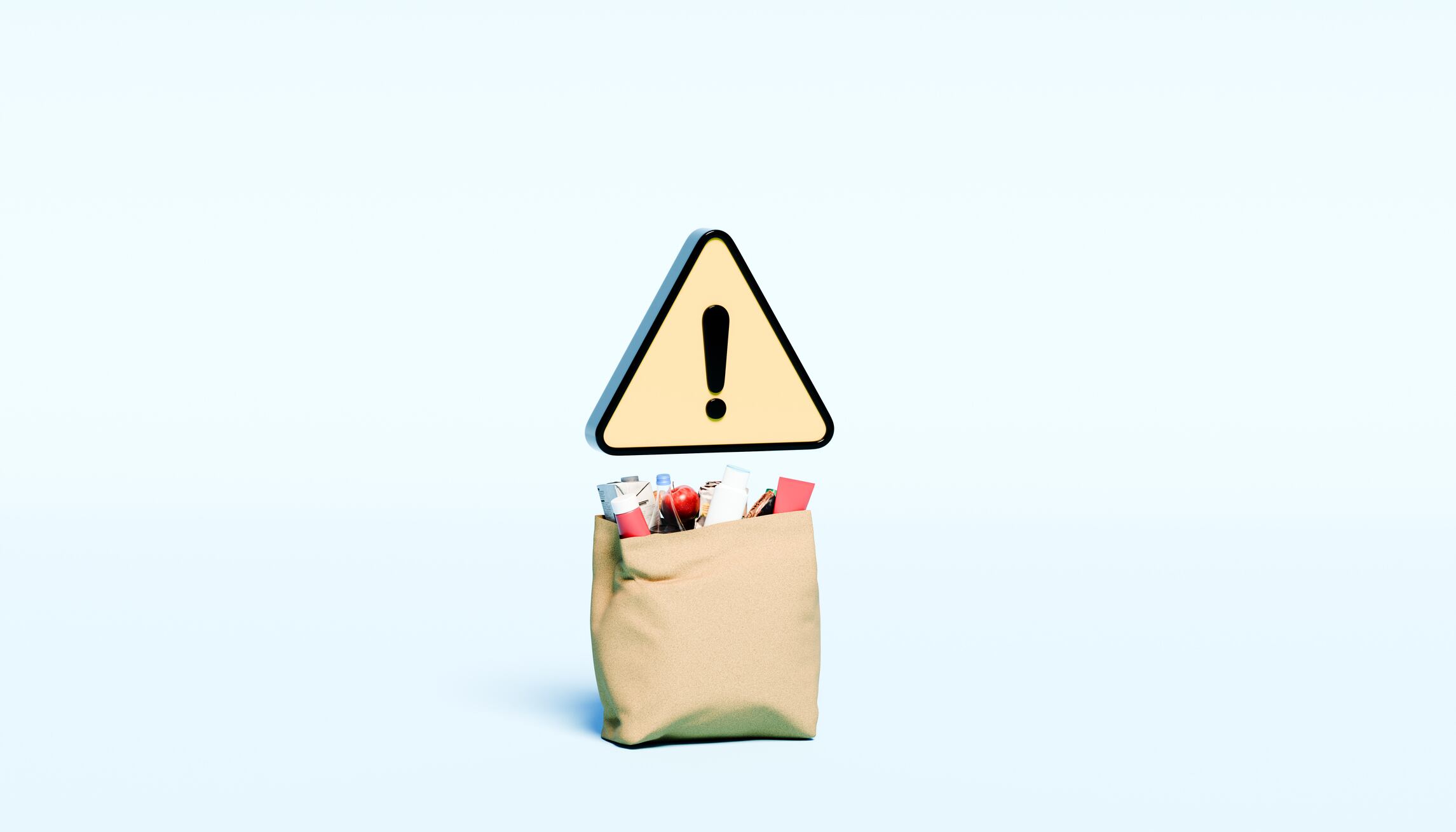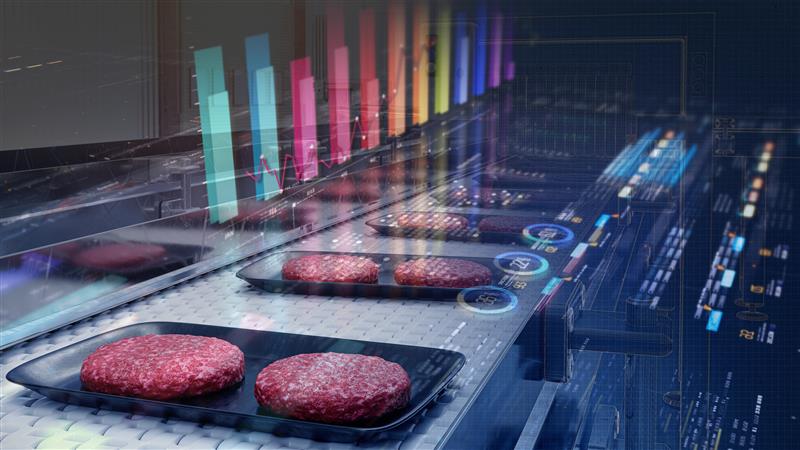Supply chains are becoming longer and more complex, with mounting pressure on industry to produce more and faster, whilst staff are stretched thin.
So far this year, the Food Standards Agency has dealt with 242 allergen-related incidents and issued fifty-eight allergen alerts.
There are a number of ways unintentional allergens can slip into the food – be it through cross contamination, suppliers substituting ingredients without warning, incorrect labelling, or equipment not thoroughly cleaned between uses, to name a few.
As a prevalent issue in the food and drink sector, this year’s Food Manufacture Food Safety Briefing focused on how we can lower the risk of allergens entering the supply chain.
Putting in place the right controls
Controls are an incredibly important part of managing allergen risk and checks must be in place during the entire process, which includes product development, intake, storage, production and packaging.
During the briefing, independent food safety consultant, Nic Sharman, highlighted the steps a manufacturer needs to take to mitigate risk, including the importance of a robust raw material risk assessment.
“To prevent the alerts seen by the FSA where there’s an allergen missing on the ingredient list, we need to have robust raw material risk assessments in place where we know – from the very beginning – what allergens are in a raw material, what allergens are handled in the factory, […] and what allergens are handled on the same line,” she noted.
“This information allows you to ask more questions and understand the risk to your product when you’re purchasing raw materials from that supplier.”
She noted that mismatches between products and packaging have been a key reason for allergen alerts recently. This could be due to, for example, packaging in a range looking similar. As such, a manufacturer will need to either manually check that the packaging is correct, or they could opt for an automated process, such as scanners on the line which identify the packaging via a 2D barcode.
“Packaging design and artwork management side of the house are not integrated,” agreed Paul Bradley, senior director of product marketing for TraceGains.
“Those are often different groups, they’re somewhat siloed, the linkage for communication between them ends up being a human – often with an e-mail. We ourselves are often the weakest link in our processes today.”
However, as Bradley pointed out, with current advancements there is a much greater ability to automate these data flows and integrate these and workflows.
Choosing between an automated or manual process very much depends on your level of risk, but when dealing with multiple allergens it’s likely that you’ll want to use the former.
If using automated controls, it’s important not to become complacent and to also check these are set up correctly. Continuous checks should also be carried out; for example, feeding the line an incorrect code to confirm the scanner flags it as an issue.
Sharman added: “It’s important that they’re scanning the barcode that’s got the version control in, not the 1D barcode, because the 1D barcode […] that just tells you that you got the right product, it doesn’t necessarily tell you more in-depth detail, to tell you got the right version of product packaging.”
AI and allergens
Alongside automation, artificial intelligence (AI) is becoming a much more utilised tool across industry and can be a great solution to plugging gaps in the face of labour shortages.
There are earlier iterations of AI already used in manufacturing, including visual recognition and smart sensors which can measure weight for example. However, as the technology is advancing, so is its potential use-cases within food production.
TraceGains for example has developed a system wherein AI can analyse certificates of analysis (COA) and validate it.
The really exciting part is that due to the advances in Gen AI tools and natural language processing, even if the system has never seen that inbound COA format before, it can still be read and data extracted from it very accurately.
Meanwhile, food safety consultant Bert Popping is working on a project known as Titan, which is trialling several food safety pilots. Among them is an AI tool that can predict allergen hazards based on historical data and new information.
As more and more data is ‘fed’ into the system, the AI will be able to make more accurate predictions of how to avoid or spot food allergens, and from there, isolate hazards earlier on before they become an issue.
The potential for such a tool is incredible but as Popping warns, “there is a darker side to AI”.
“You can have poor or biased data that lead to wrong results,” he said. “And we’ve seen that in the past where an AI has been trained on rough data and the rough data in the early days were a little more biased. As we commonly say: garbage in, garbage out.”
And there are other issues. For example, let’s say you are dealing with seasonal goods that are harvested at different times; if you train an AI on just summer wheat harvests and not winter harvests, you can create blind spots in the data which can lead to ‘hallucinations’ (i.e. AI fabricating information).
With this in mind, while AI will be an extremely useful tool going forward, it’s vital the human remains in the loop and verifies the data and recommendations it generates.
This was a point Bradley made too, stating that the intention of TraceGains processes is not to replace but rather to “make the human operator more effective and more efficient; and give them better information to make good decisions and do their jobs effectively”.
Precautionary allergen labelling
Precautionary allergen labelling (PAL) can also be used to help consumers make safe choices when it comes to allergens, for example statements such as ‘may contain’. However, these should not be slapped onto labels without real reason, i.e. an unavoidable risk of cross-contact.
As Jodie Wild, head of incidents unit, Food Standards Agency told viewers, if used frivolously, PALs can cause confusion or limit choice unnecessarily.
“We encourage businesses to be clear, honest and evidence based in their labelling,” she added.
Her presentation emphasised the importance of people and collaboration – both in terms of staff training and honest communication if something bad does happen.
Throughout the 2024-25 period, the FSA continued to enhance its understanding of the underlying causes of allergen incidents by collaborating closely with industry partners on a process known as ‘root cause analysis’ (RAC) for incidents.
This is used to gain an understanding as to why an incident happened and therefore prevent it from happening again. RCA has now become a standard part of the agency’s response to incidents.
“Every qualifying incident in England triggers an RCA request and we share what we learn with industry partners. We’ve developed guidance, online modules and even animated explainers to help businesses learn from mistakes not just their own but across the sector, and we want to grow this more, enabling sharing of best practice,” said Wild.
“We work collaboratively through specialist working groups. For example, we’ve tackled complex issues like allergen testing and dried herbs and spices and developed case studies to share best practice. We’re always looking for ways to refine our risk assessments and make guidance more accessible because food safety is a shared responsibility.”
She concluded: “The work of the Incidents and Resilience units is about more than just responding to crises. It’s about building a safer, more inclusive food system for everyone.”





